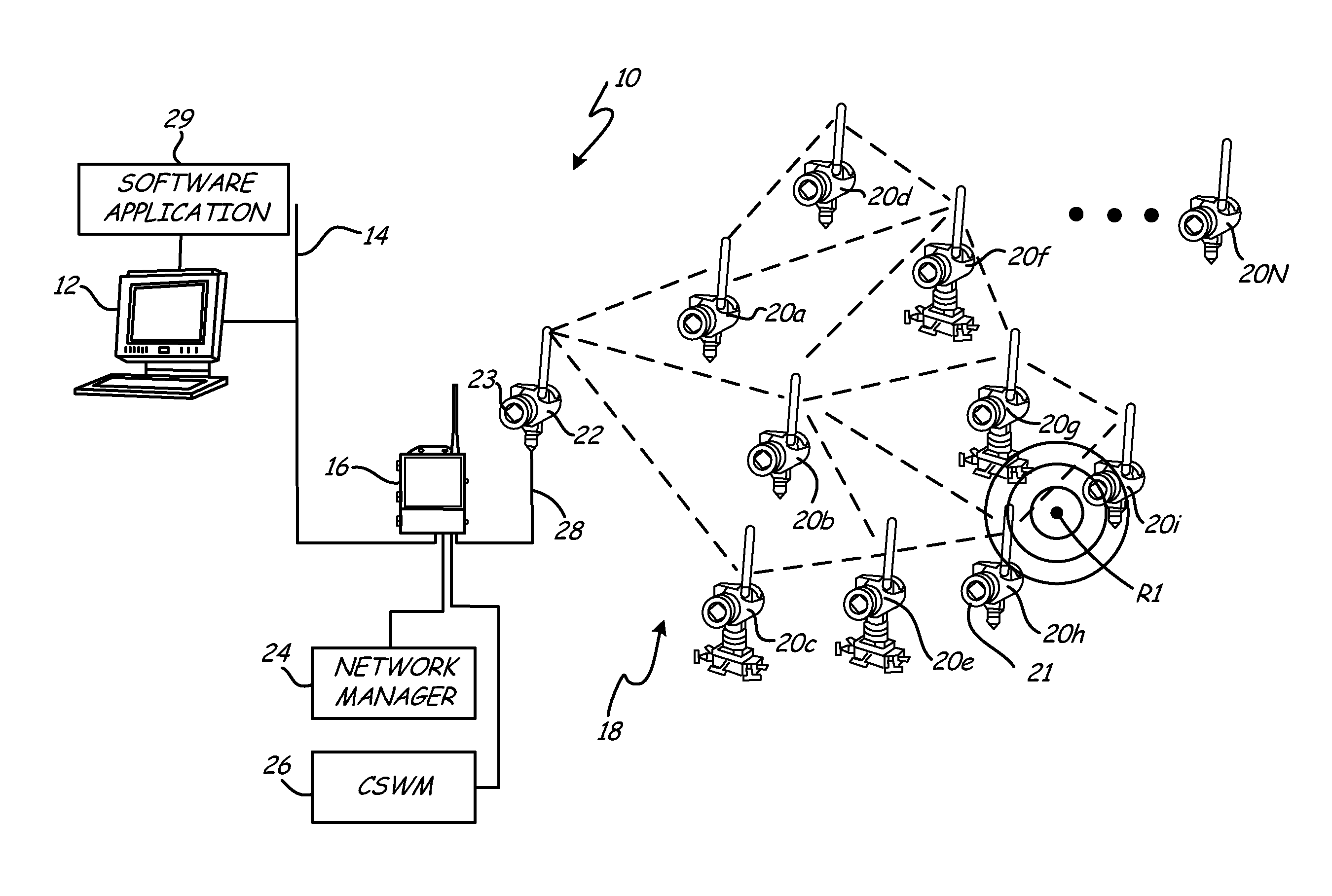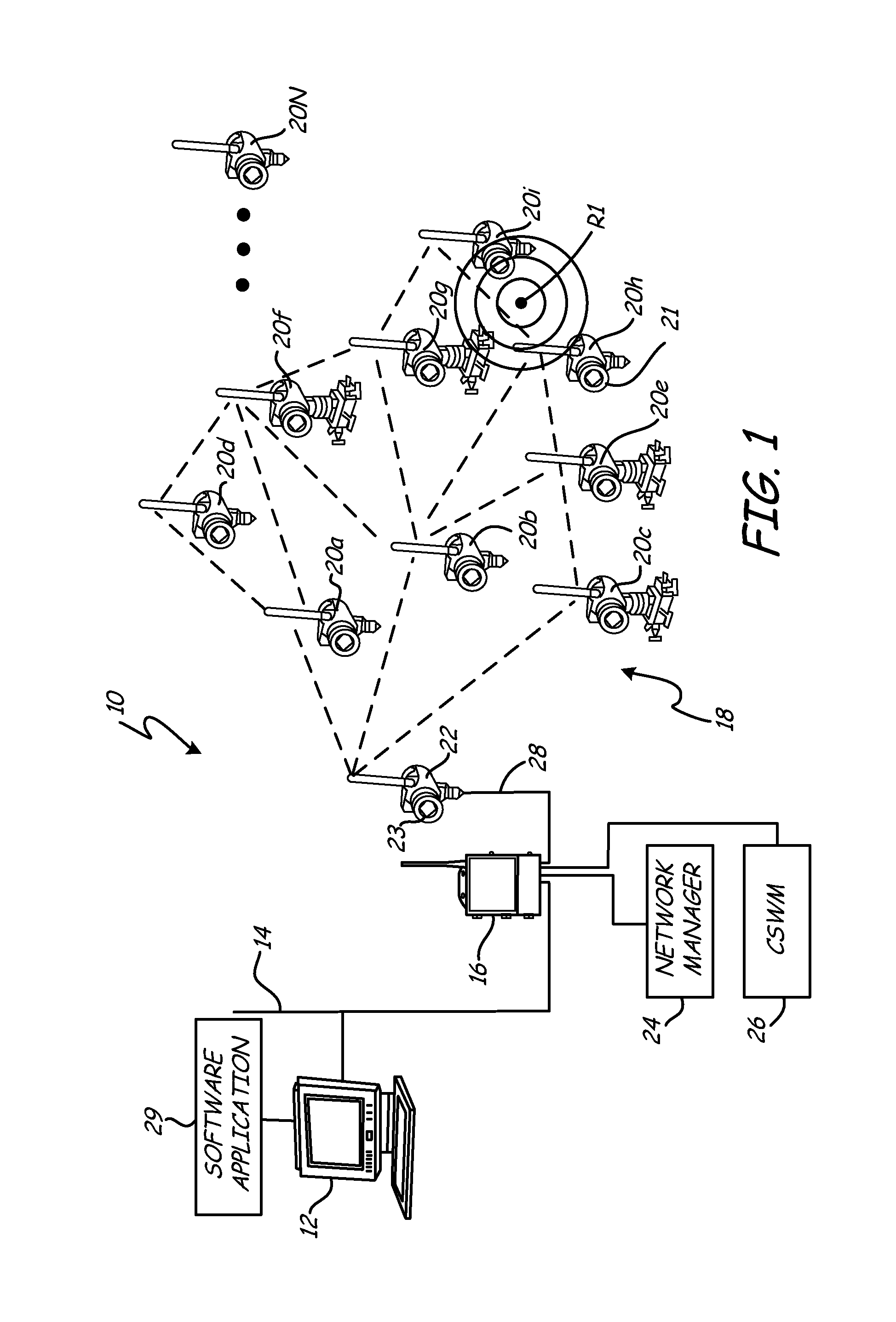Wireless sensor network access point and device RF spectrum analysis system and method
a sensor network and access point technology, applied in the field of wireless networks, can solve the problems of degrading the performance of the network, causing a great installation, and requiring more hops
- Summary
- Abstract
- Description
- Claims
- Application Information
AI Technical Summary
Benefits of technology
Problems solved by technology
Method used
Image
Examples
Embodiment Construction
[0013]The present invention will be discussed in terms of measuring and analyzing radio frequency (RF) interference proximate and within a wireless field device network with a mesh network topology. A person skilled in the art will recognize that the invention is equally suited to other network topologies and is not limited to solely the embodiments described, but that the invention will include all embodiments falling within the scope of the appended claims.
[0014]The present invention uses the received RF power measurement capability available in wireless devices, such as, for example, those with radios that comply with the IEEE 802.15.4 standard, to detect sources of RF interference. The IEEE 802.15.4 standard defines a physical layer (PHY) and a media access control (MAC) layer for low-data-rate wireless connectivity with fixed, portable, and nomadic devices with very limited power consumption requirements. The very limited power consumption requirements are, for example, much le...
PUM
 Login to View More
Login to View More Abstract
Description
Claims
Application Information
 Login to View More
Login to View More - R&D
- Intellectual Property
- Life Sciences
- Materials
- Tech Scout
- Unparalleled Data Quality
- Higher Quality Content
- 60% Fewer Hallucinations
Browse by: Latest US Patents, China's latest patents, Technical Efficacy Thesaurus, Application Domain, Technology Topic, Popular Technical Reports.
© 2025 PatSnap. All rights reserved.Legal|Privacy policy|Modern Slavery Act Transparency Statement|Sitemap|About US| Contact US: help@patsnap.com



